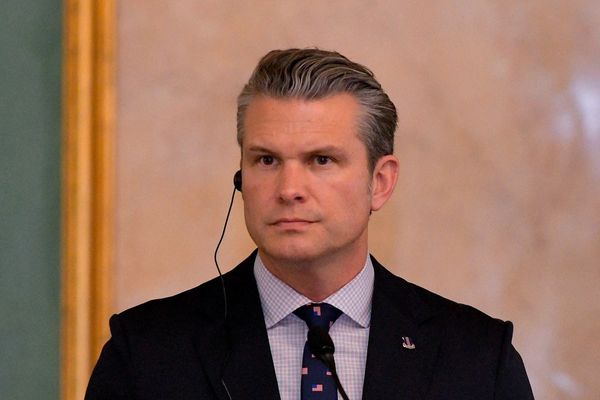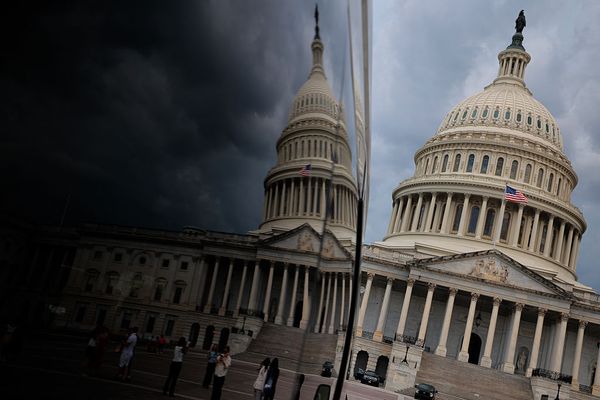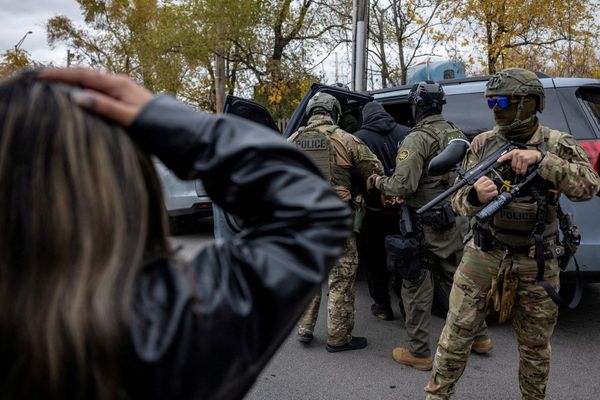
Ion Iliescu, Romania’s first freely elected president after Communism, helped bring down the country’s dictatorship and led its transition to democracy and a market economy. A central figure in the 1989 revolution, he went on to serve three terms as head of state – but was later charged with crimes against humanity. The 95-year-old, who died on Tuesday, leaves behind a deeply divided legacy.
“Today's Romania is the creation of Ion Iliescu,” said Ioan Stanomir, a professor of political science at the University of Bucharest, speaking to RFI's Romanian service.
An engineer by training and a committed Communist, Iliescu was at the centre of the Romanian Revolution of December 1989.
He took power during the uprising, which many later described as a coup. Iliescu then oversaw the summary trial and execution of the country’s former leader – “whose protégé he was before becoming his executioner”, according to historian Traian Sandu in his biography of Nicolae Ceausescu.
Iliescu founded the National Salvation Front (FSN) during the revolution, alongside other former members of the Communist Party. The FSN later became the Social Democratic Party (PSD).
After serving as acting president for five months, Iliescu was elected head of state in May 1990 in Romania’s first free elections in 50 years. He was re-elected in 1992 after a new constitution was adopted.
Defeated in 1996 by his Christian Democrat opponent Emil Constantinescu, Iliescu went on to win a third and final four-year term as president of Romania in 2000.
During that final term, Romania joined NATO in March 2004 and completed its negotiations to join the European Union. The country became a member on 1 January 2007.

From inner circle to sidelines
Born on 3 March 1930 in the city of Oltenita, on the southern border of the country across the Danube from Bulgaria, Iliescu was raised by his stepmother, grandparents and latterly an aunt, after his mother abandoned the family when he was a baby. His father, a staunch Communist at a time when the party was illegal, spent several years in Moscow and was jailed on his return.
Iliescu studied engineering at the Bucharest Polytechnic Institute, and was then awarded a scholarship to study at the Faculty of Energy in Moscow.
While there, he reportedly became friends with Mikhail Gorbachev, the future Soviet leader – a connection that later led some to suspect Soviet influence in the fall of Romania’s dictatorship. Critics called Iliescu “Gorbachev's man in Romania”.
He joined the Romanian Communist Party in 1953, at the age of 23, and quickly climbed the ranks. He led the Young Communists, became minister for youth in 1967, and joined the Central Committee the following year, where he handled propaganda.
In the 1970s, Iliescu fell out of favour with the leadership due to his reformist views. He remained on the Central Committee until 1984 but was pushed to the margins of political power.
Romania at a crossroads: confronting communist nostalgia on election day
Speaking to Radio Free Europe in 1999 about these ideological differences, Iliescu said: "In [19]71 [Ceausescu] saw in the [North] Korean model, a possible model for him to introduce the same control in the country. And we had some discussion about this matter.
"I asked him: what are the elements which could inspire any confidence in such a system, in such a model, which is an anti-human model of organising the state? Afterwards, I was thrown out of my political position, from the leadership of the country."
Between 1972 and 1979, he held local council roles, before moving to a government publishing house in the 1980s. The Securitate, Romania’s secret police, kept him under constant surveillance.
A televised revolution
From that obscure position, Iliescu returned to public life on 22 December 1989 as one of the orchestrators of the revolution, which had begun with anti-government protests that spread across the country.
However, this did not surprise many viewers, as by the late 1980s rumours abounded that he was to become Ceausescu's replacement, backed by Gorbachev. His exile from the dictator's inner circle had positioned him as a palatable alternative when the regime eventually crumbled.
Iliescu later said the first sign of change came when the secret police who followed him “night and day” suddenly disappeared at 11am on 22 December.
He described how friends told him crowds were gathering at the country's television studio and people were meeting there, so he joined them.
“I was in this studio of the television, addressing the country. There was a... presence of different people expressing their enthusiasm with this movement, which was taking place in our country," Iliescu said.
"Some hours of general enthusiasm, of general solidarity, of general hope for better things... But I felt that something had to be put in order because such enthusiasm and general sentiment of liberation can lead to... anarchy and dissolution of the country.”
A group of about 20 people met to draft a proclamation and propose a plan.
“When we started to discuss this proclamation, it was already after [6pm], some shooting was provoked by somebody. We didn't know what had happened and who was provoking it, but a panic began and a military confrontation started in the dark of the evening of the 22nd.”
They went to the Ministry of the Army to restore order and then returned to the TV station.
“We presented our proclamation to the country, with 10 points... It became the main programme of the Romanian Revolution and the setting up of the first provisional body, with the responsibility to rule the country – the National Salvation Front,” Iliescu said.
His role in the events of December 1989 remains controversial. He was accused of heightening a national atmosphere of confusion which led to violence, and alleged to have called for armed intervention by the Soviet Union.
The revolution lasted from 16 to 25 December, the day on which Ceausescu and his wife Elena were executed by firing squad after a two-hour trial, and saw more than 1,000 people killed – 862 of them after Iliescu had taken power.
Iliescu became Romania's interim president and oversaw the rapid dismantling of the Ceausescu regime. In May 1990, he and his party won the elections with 85 percent of the vote. At the height of his popularity, Romanians were known to chant: "The sun shines, Iliescu appears."
Roma push France to recognise Holocaust-era genocide
Miners vs students
But this election victory was swiftly followed, in June 1990, by what came to be known as the Mineriads – a moment that would overshadow the rest of Iliescu's political career.
When student protests against his leadership broke out in Bucharest, Iliescu called on the country's coal miners – then politically influential – to come to the capital and put an end to the peaceful demonstrations by force.
Armed with bats, shovels and pickaxes, 20,000 of them answered his call.
From June 13 to 15, the city was engulfed in violence. Reports on the number of people killed vary between four, six and 100, while estimates of those injured reach more than 1,300.
The Mineriads are now seen as an attempt to destroy the democratic opposition by turning social groups against each other. Some say the divide between working-class and educated Romanians remains visible today.

Stagnation and loss of support
Between 1990 and 1996, Iliescu served two presidential terms marked by stagnation and a refusal to implement economic reforms. He opposed privatisation and the restitution of property confiscated by the Communist regime.
Miners' riots throughout the decade also hampered Romania's transition to a market economy and deterred badly needed foreign investment for years.
Iliescu was criticised for surrounding himself with corrupt figures, former Communist Party decision-makers and members of the Securitate, as well as people suspected of having ties to the Soviet and Russian secret services.
After years of rampant inflation, economic stagnation and lack of prospects, by the election of 1996 Iliescu had lost much of his popular support, and lost the presidency to university professor Emil Constantinescu.
He returned to office in 2000, amid disappointment with the centre-right government. His second term was marked by less political acrimony and a critical stance towards corruption surrounding then-prime minister Adrian Năstase.
This final term also contained two bright spots in Iliescu's career – the Snagov consensus of 1995, which saw all parliamentary parties support Romania's application to join the European Union, and the historic reconciliation with Hungary, which paved the way for both countries to join the EU and NATO.
Romania's joining of the latter was marked by a historic visit from United States president George W Bush to Bucharest.
Crimes against humanity
Iliescu left the presidency in 2004 and served in the Senate until 2008. But he was later brought to court.
In 2018 he was formally indicted over his role in the 1989 revolution and charged with crimes against humanity for his alleged role in the killing of 862 people, with prosecutors alleging that he failed to prevent "numerous situations" in which people were killed and accusing him of spreading misinformation through the media, causing a panic.
The trial was suspended and postponed, initially due to the Covid-19 pandemic and then because of procedural issues, and was eventually dropped.
In a separate case, he was also charged over allegedly bussing in miners to Bucharest to crush peaceful student protests in June 1990.
After launching the legal proceedings in 2017, the Court of Cassation decided in 2020 to start the investigation from scratch, but this case too failed to reach a resolution.

Contested memory
In a statement on its website following his death, Iliescu's former party, the PSD, said: "Mr President Ion Iliescu will remain for all of us a symbol of the politician and statesman. He had the courage to confront Ceausescu and his dictatorship, and directed Romania irreversibly on the Euro-Atlantic path."
"He was a strong leader, loved by most, contested by others, as happens in democracy,” it added.
Sorin Grindeanu, the party's current leader, said: "Regardless of divergent views, his contribution to Romania's transition to democracy remains part of our collective memory."
According to Sergiu Miscoiu, a political science professor at Babes-Bolyai University: "Ion Iliescu must be understood in the context of his time. He stirred anti-totalitarian sentiments in the 1990s, rightly so, but he was also the object of adulation by a large part of the population.
"While he called miners to Bucharest [in the Mineriad] and sealed the slow and uncertain transition, he also pushed Romania on a Euro-atlantic path."
Divided Romania faces uncertain future despite rejecting the far right
The Romanian government declared Thursday, 7 August a day of national mourning, and held a two-day state funeral for the former president on Thursday and Friday.
When asked by RFI's Romanian service whether he agreed that Iliescu should receive such an honour, political scientist Ioan Stanomir said: "This is a rather delicate moment, because Ion Iliescu's posterity also includes the memory of the victims. There are the victims of the Revolution, in particular those after December 22, 1989, and there are also the victims of the Mineriad.
'He cannot be separated from the composition of a political system that has left a legacy of corruption, patronage, nepotism and clientelism in Romania."
Following current President Nicusor Dan's election victory in May this year, Iliescu congratulated him saying: "Romania needs coherence, dialogue and a firm commitment to strengthening democratic institutions and its European path. I am convinced that you will exercise this responsibility with dignity and a sense of duty to the nation."
Following Iliescu's death, Dan, a pro-Western centrist, called him "the main figure of the 1990s transition" and said: "History will judge Ion Iliescu."
(with newswires and partially adapted from this article in French and this article in Romanian)







